Gallery: Tour de France race winning bikes
Race winners from the last 20 years
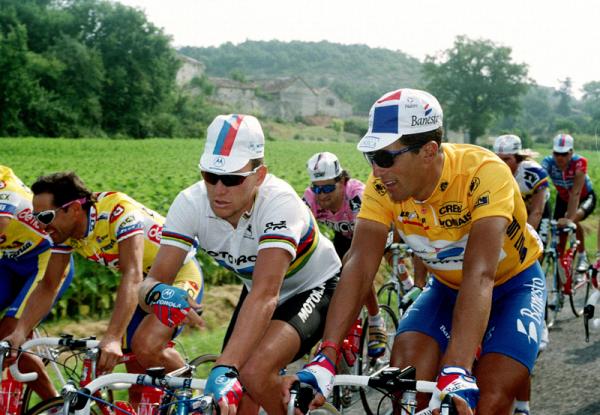

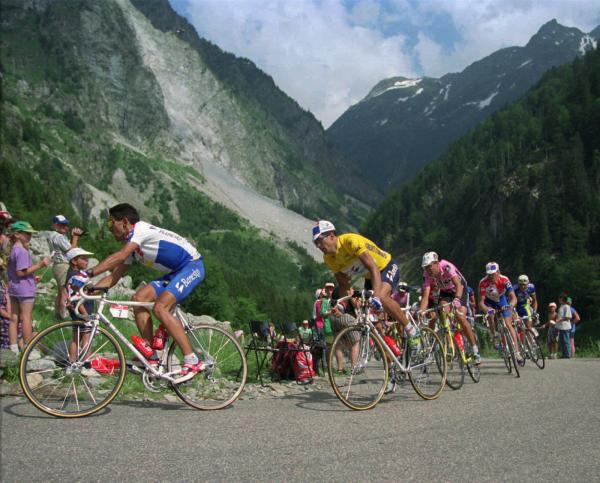
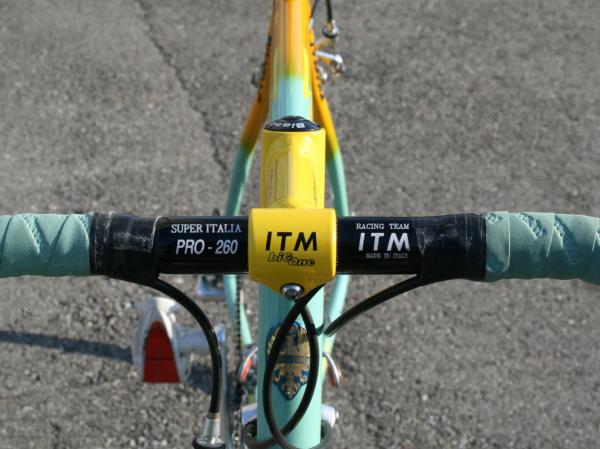
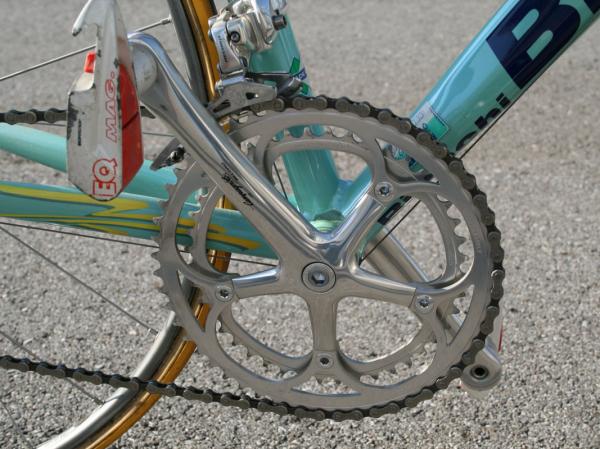
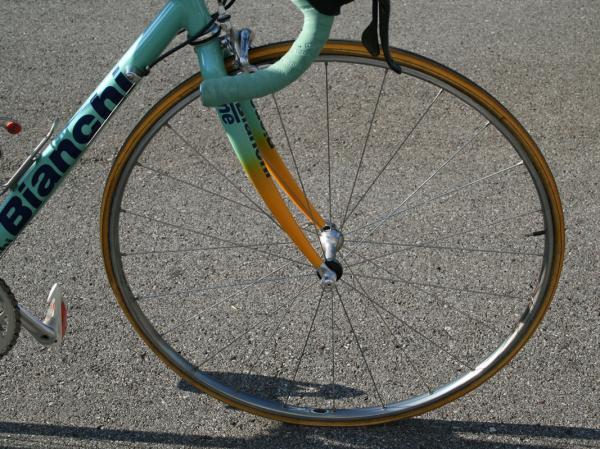
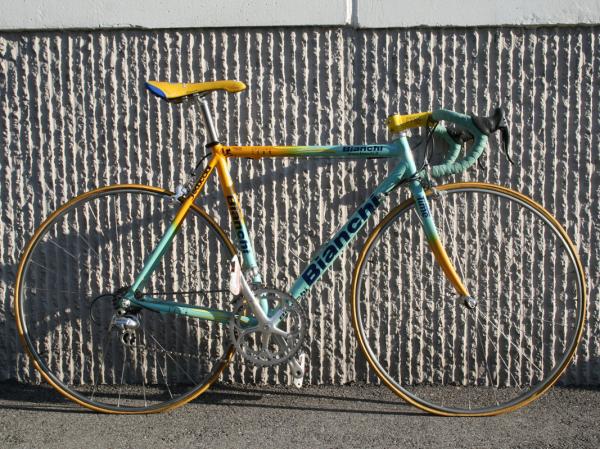
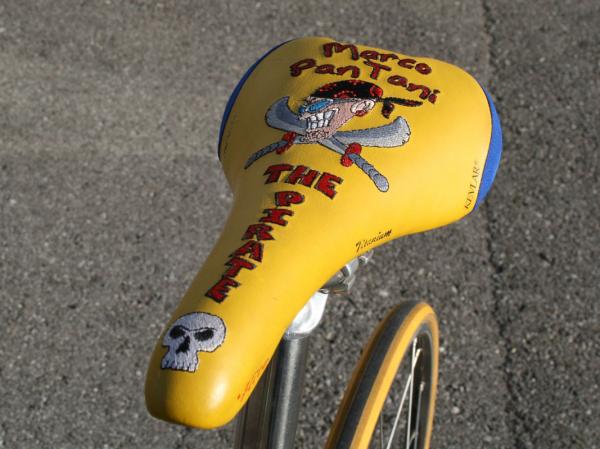
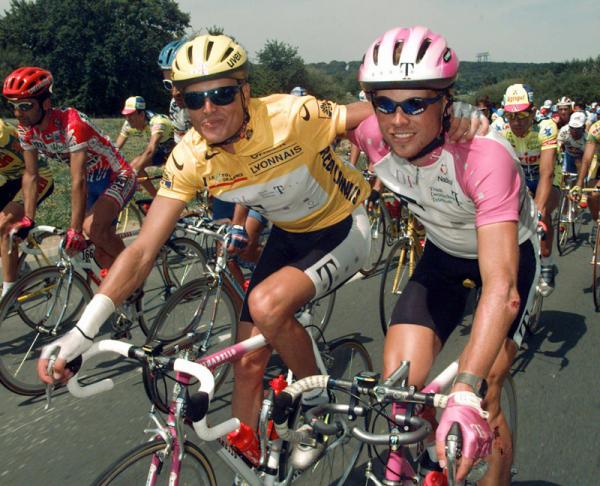
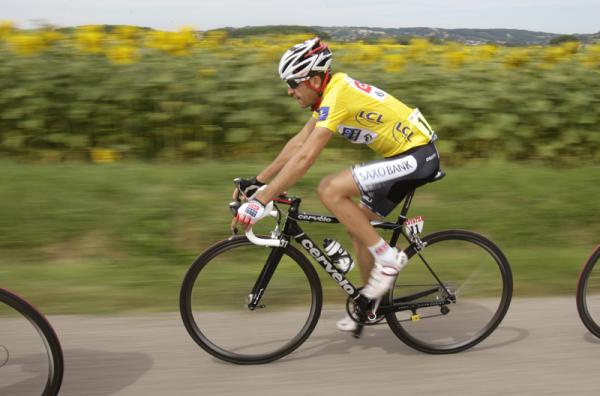
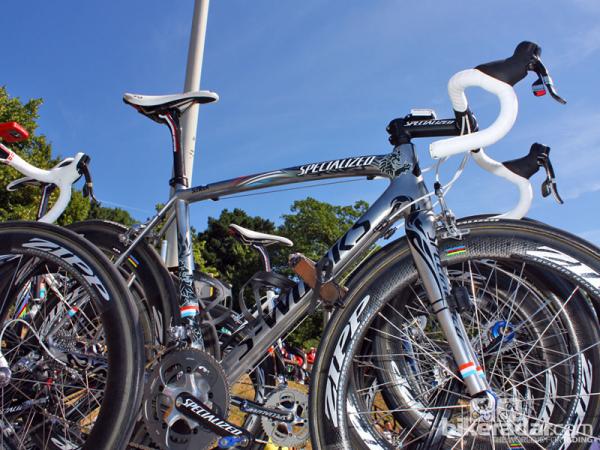
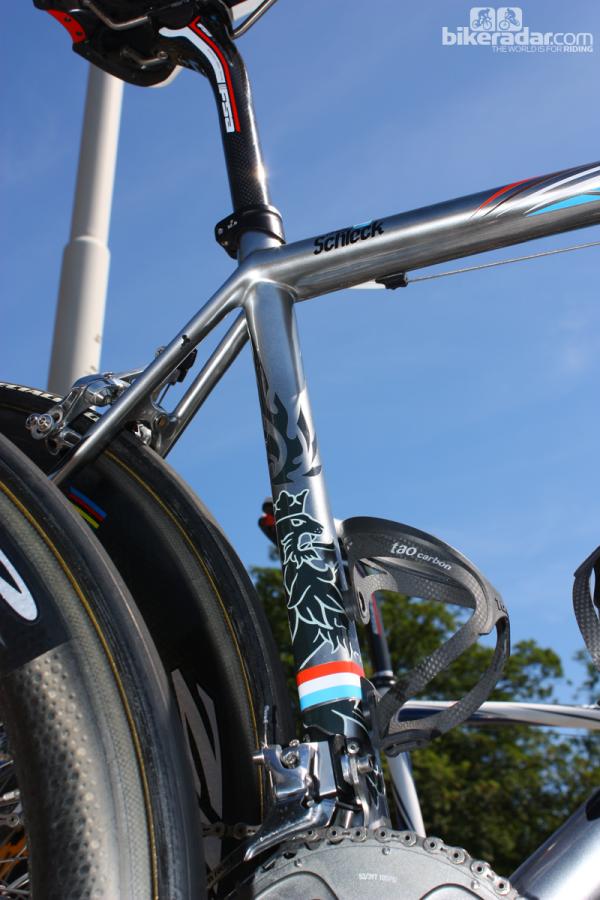
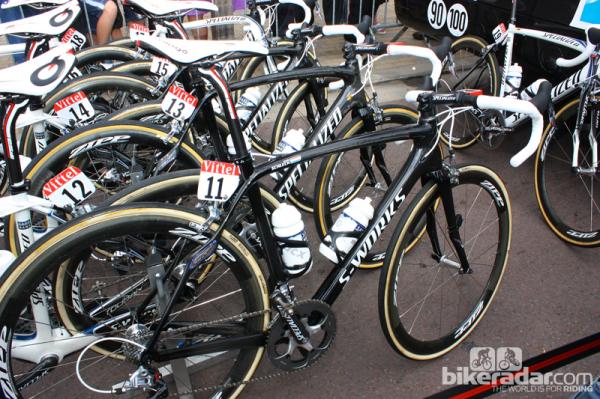
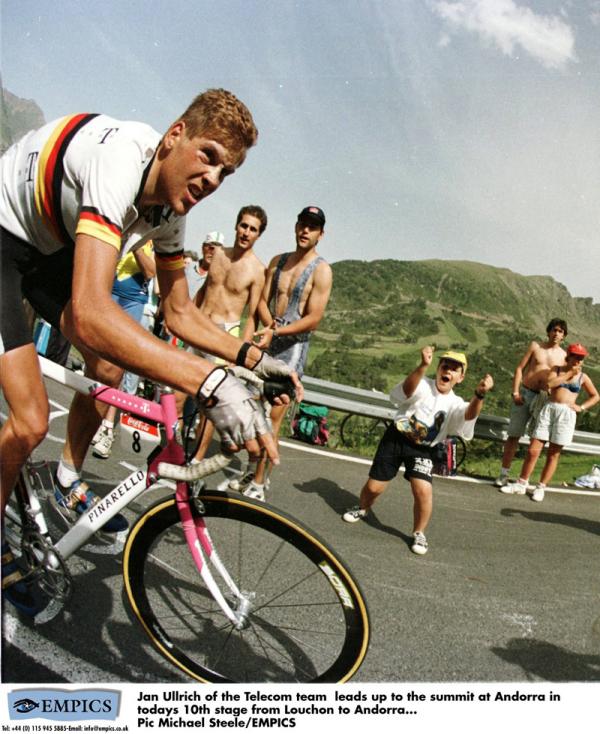
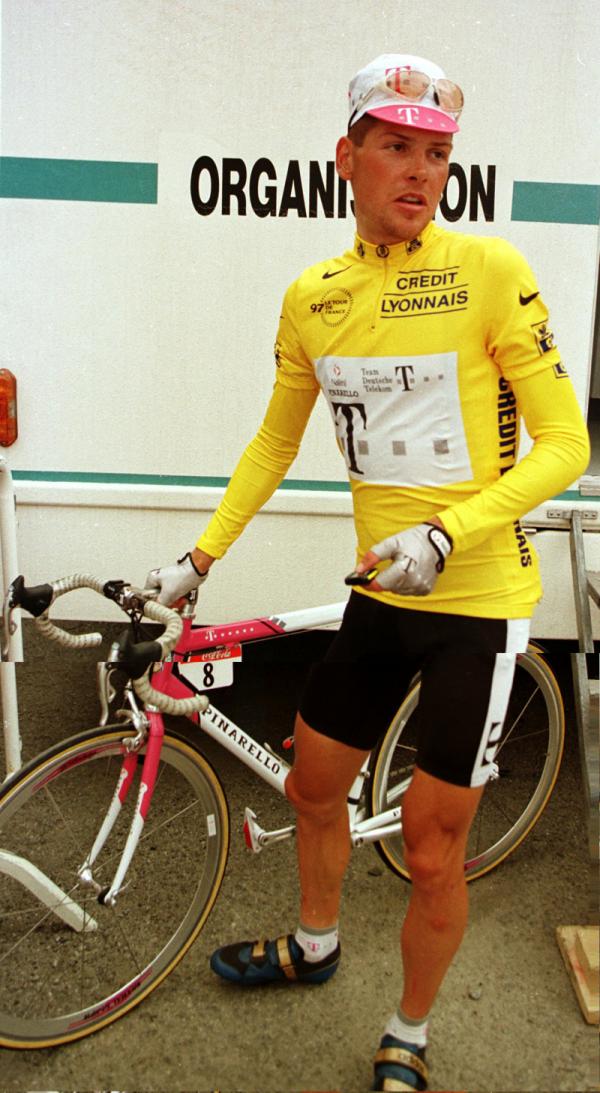
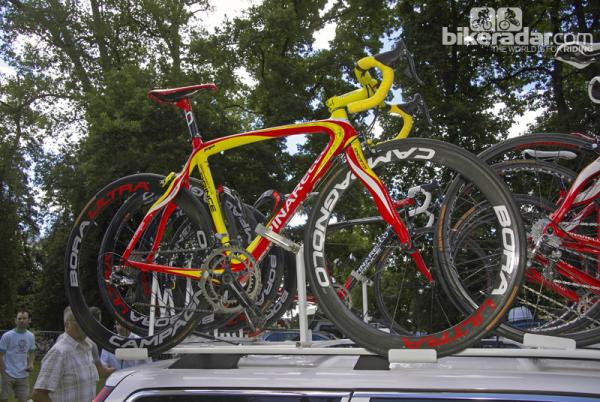
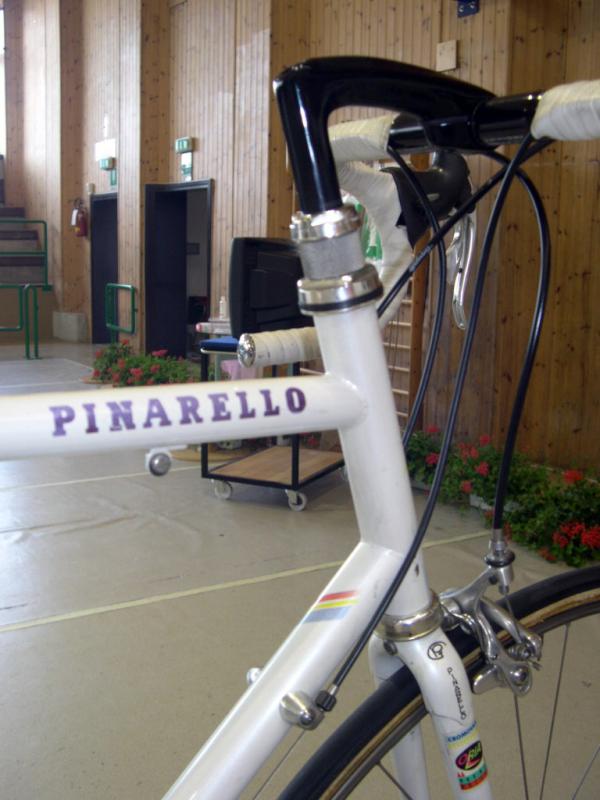
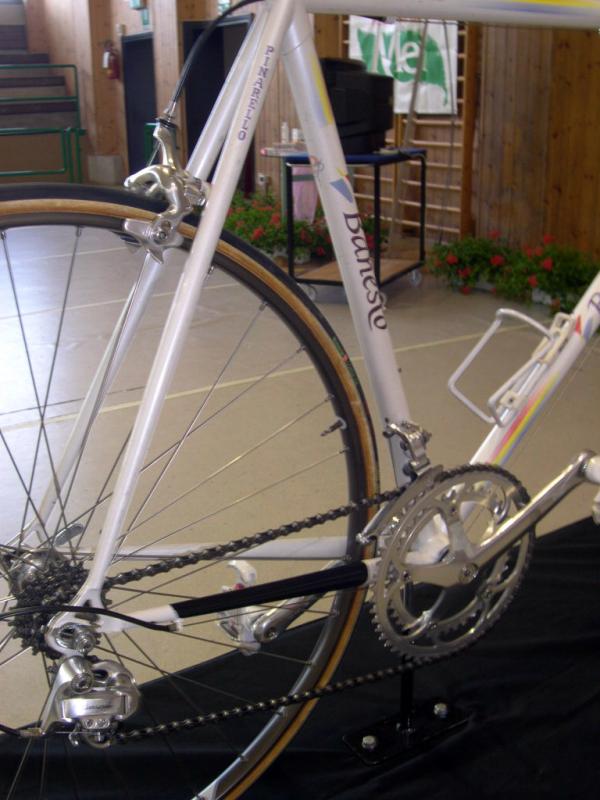
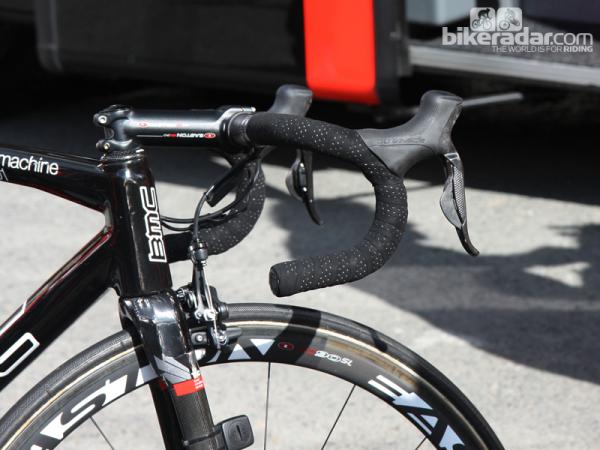
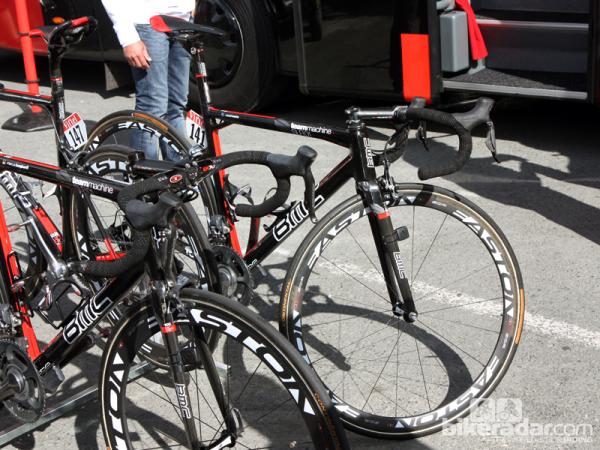
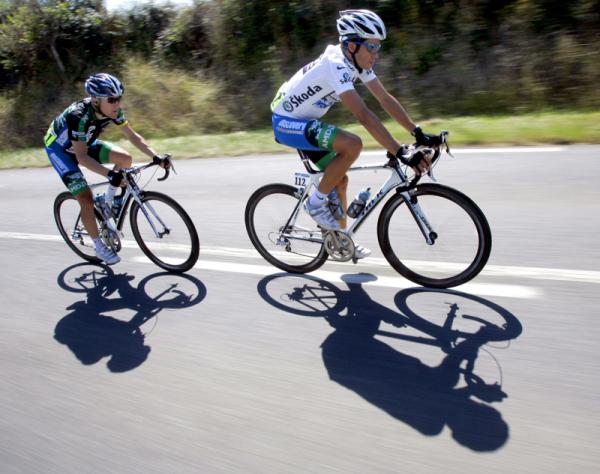
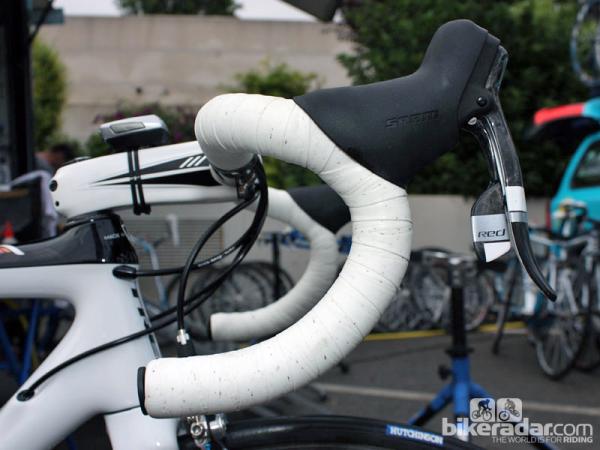
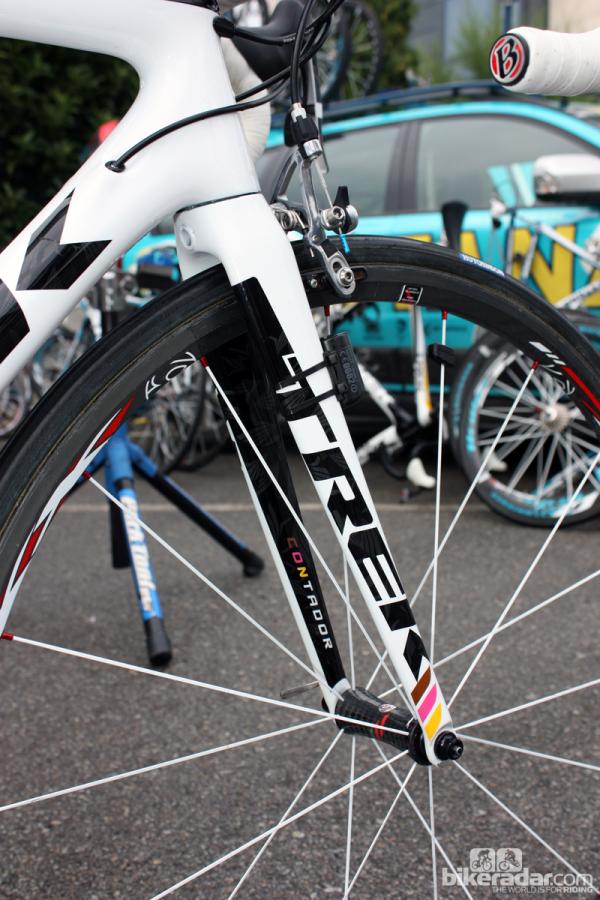
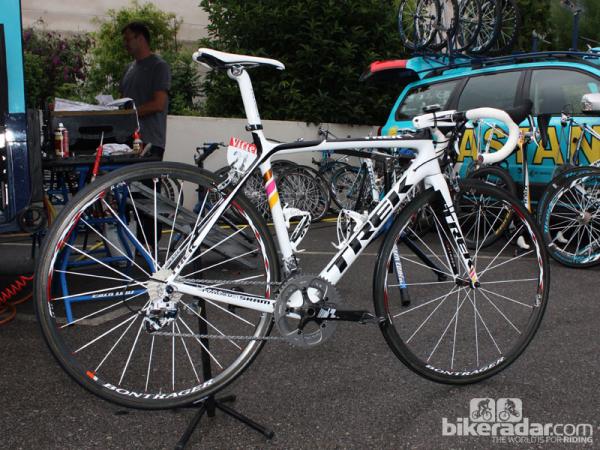
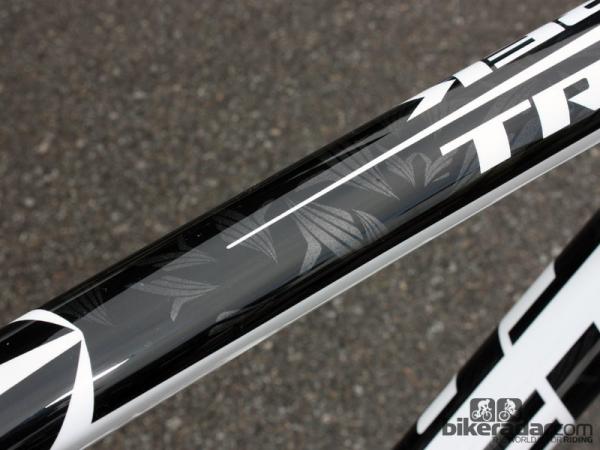
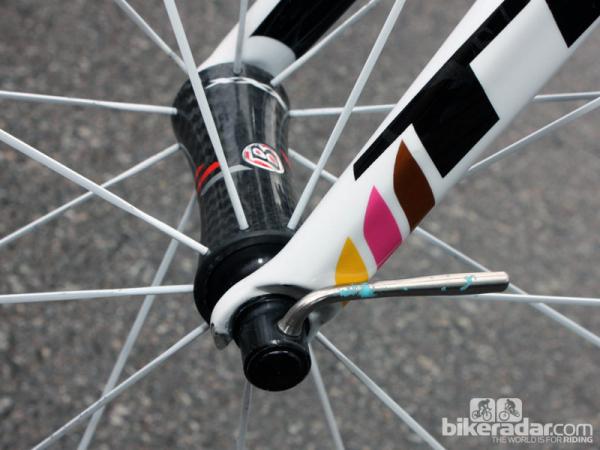
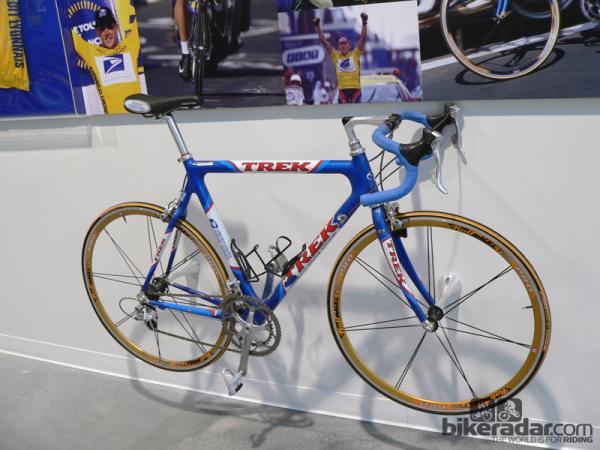
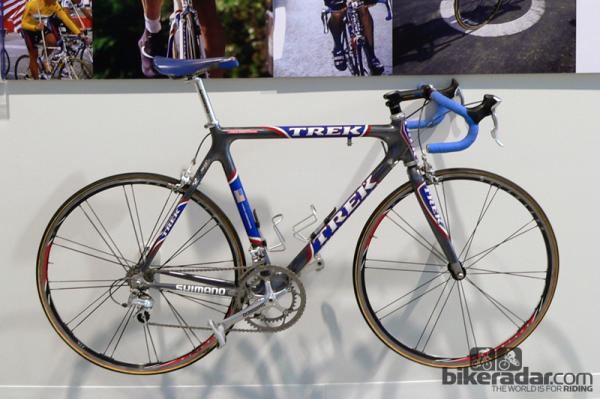
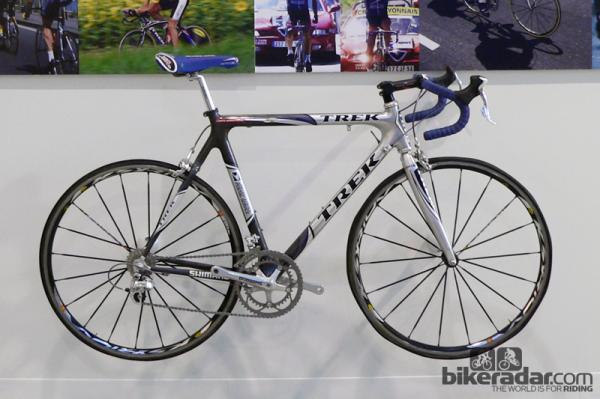
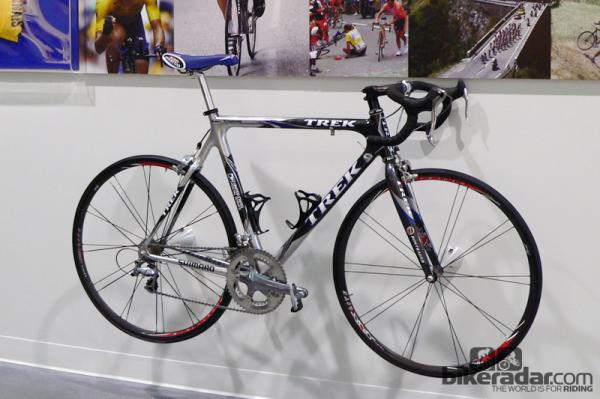
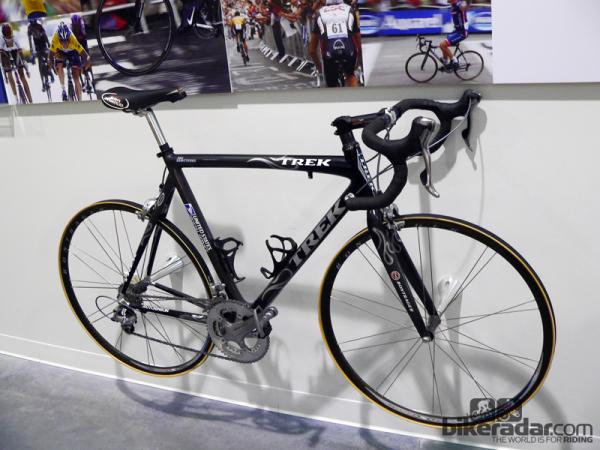
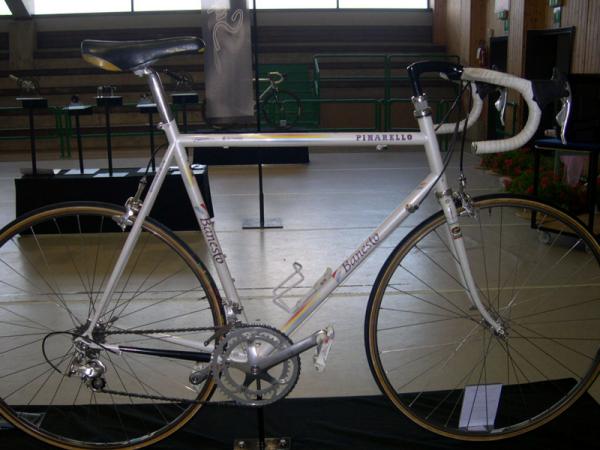
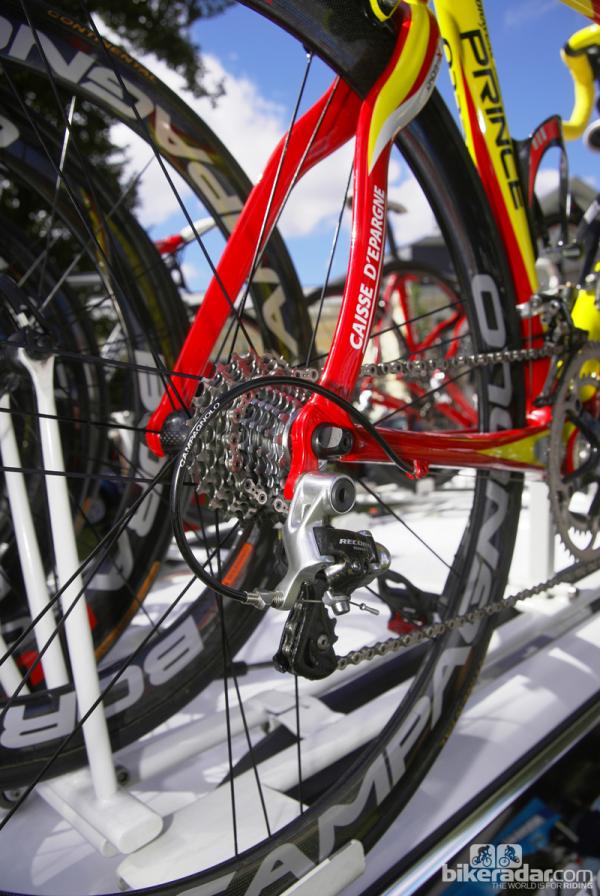
This article first appeared on BikeRadar.com
With the start of the 2012 Tour de France just around the corner, we've decided to take a look back at the race's winning road bikes from the past 20 years. As expected, carbon fiber dominates the material landscape in more recent years, but you don't have to look too far back to find steel, aluminum and even metal matrices atop the podium.
2011: Cadel Evans' (BMC) BMC TeamMachine SLR01 and Impec
Australian Cadel Evans employed two different BMC road bikes during the 2011 Tour de France. His TeamMachine SLR01 used a more conventional modular monocoque carbon fiber construction but his Impec boasted a far more radical manufacturing method. Instead of using individual carbon plies laid into a mold, all the tubes were woven mechanically at BMC's factory in Grenchen, Switzerland. Each joint was held together by a molded carbon fiber clamshell lug.
Build kits were the same for both bikes, however, comprising a Shimano Dura-Ace Di2 electronic group punctuated by an SRM PowerMeter, Speedplay Zero pedals, a Fizik Antares saddle, Continental tires and Elite bottle cages. A wealth of gear from team sponsor Easton included carbon EC90 tubular wheels, a forged EA90 stem and a traditional-bend bar.
2010: Andy Schleck's (Saxo Bank) Specialized S-Works Tarmac SL3
Like all Tour-winning bikes of the past decade, Andy Schleck's Specialized S-Works Tarmac SL3 was built around a carbon fiber chassis, although you'd barely know it judging by appearances. The entire frame and fork were covered in gleaming silver paint that did an admirable job of mimicking the look of metal. The bike was personalized with Luxembourg's country colors around the fork blades and on the sides of the top tube, and boasted a quartet of roaring lions.
Get The Leadout Newsletter
The latest race content, interviews, features, reviews and expert buying guides, direct to your inbox!
SRAM provided most of the build kit, including a Red group, and the wheels were Zipp carbon tubulars. The Specialized logo was found on the FACT carbon cranks and angle-adjustable forged aluminum stem. Completing the package were an FSA bar and seatpost, Prologo saddle, Veloflex tires, Speedplay Zero pedals, Tacx Tao Carbon cages and Gore Ride On sealed cables.
(Astana's Alberto Contador was the original winner of the 2010 Tour de France but the title was given to Schleck following the Spaniard's positive test for clenbuterol.)
2009: Alberto Contador's (Astana) Trek Madone 6-Series
Alberto Contador's second Tour de France victory came aboard a custom Trek Madone 6-Series, which was exquisitely prepared by team mechanic Faustino Munoz. While Schleck's machine was all about Luxembourg, Contador's rig was more of a personal reflection, with the elaborate graphics paying tribute to his past conquests and even his trademark finish line salute.
In contrast to the paint job, the build kit was quite straightforward, including a complete SRAM Red group. A wealth of gear came from Trek subsidiary Bontrager, such as the Race XXX Lite shallow-profile carbon tubular wheels (deeper-section hoops were swapped in for flat stages), Race XXX Lite molded carbon stem and Race XXX Lite VR carbon handlebar. Capping things off were Hutchinson tubular tires, Look Keo 2 Max Carbon pedals, a Cane Creek headset and Contador's typical Selle Italia SLR saddle.
BikeRadar were on hand at that year's race, and we weighed Contador's bike – it was exactly 6.8kg (14.9lb), just as it should be for a climbing specialist.
2008: Carlos Sastre's (Team CSC-Saxo Bank) Cervélo R3-SL
Carlos Sastre took charge of the 2008 Tour de France with a convincing attack on stage 17, blitzing up the slopes of Alpe d'Huez on a Cervélo R3-SL. The lightest in Cervélo's range at the time, the R3-SL epitomized the company's R-series design philosophy at the time – rectangular-to-oval 'Squoval' tube profiles, exceptionally tiny seat stays and big-diameter chain stays, all wrapped in a bare-bones black-and-white paint scheme. Claimed frame weight was a paltry 800g or so.
That day, Sastre's Cervélo was the veritable definition of a pure climber's bike, with ultra-light Zipp 202 shallow-profile carbon tubular wheels for minimal rotating mass. Given the UCI's 6.8kg (14.99lb) rule, the rest of the gear didn't need to be spectacular to make weight. Strapped to the Cervélo frame and 3T fork were a Shimano Dura-Ace 7800 transmission and brakes, an FSA K-Force Light crankset with elliptical Rotor Q-Rings, a 3T cockpit, Prologo Scratch saddle and Speedplay Zero pedals.
2007: Alberto Contador's (Discovery Channel) Trek Madone Pro 5.2
Contador's Madone Pro 5.2 was a significant departure for Trek, who previously shunned the idea of a sloping top tube on their flagship carbon fiber road racer. In addition to the semi-compact geometry, Contador's Madone incorporated what was then a radically aggressive list of integrated features – a 90mm-wide bottom bracket with direct-fit cartridge bearings, a tapered head tube with similar drop-in bearing seats, ultra-wide chain stay spacing, a huge down tube profile and a novel no-cut semi-integrated seatmast.
Contador hadn't quite achieved superstar status at this point, so his bike was basic team issue, right down to the standard paint. Shimano provided the complete Dura-Ace 7800 group and pedals. Contador perched himself atop a San Marco Concor Light saddle, and Hutchinson provided tubular tires. The rest came from Trek house brand Bontrager, including the Race XXX Lite shallow-profile carbon wheels for climbing stages, the forged aluminum Race X Lite stem and anatomic-bend Race X Lite aluminum handlebar.
2006: Oscar Pereiro's (Caisse d'Epargne) Pinarello Prince
Caisse d'Epargne's Pinarello Prince machines have never been tough to spot, with their striking paint jobs and unmistakably curvaceous shapes. According to Pinarello, the distinctively bendy fork blades and seat stays lend a smoother and more surefooted ride, while the stout lower half provides a stiff foundation for efficient pedaling.
Caisse d'Epargne team bikes stuck tightly to the European theme in 2006, with complete Campagnolo Record 10-speed groups (Campag 11-speed wasn't launched until 2008) and matching carbon tubular wheels, Continental tires, Look Keo pedals and Selle Italia saddles. Pinarello also supplied the bars, stems and seatposts out of the company's MOst component range.
(Phonak's Floyd Landis was the original winner of the 2006 Tour de France but his title was stripped following a positive test for testosterone.)
1999-2005: The Lance years
Lance Armstrong's seven-year run of Tour de France victories was not only incredible from a racing point of view, it also marked a period of dominance for bike sponsor Trek and their carbon fiber Madone range. The same went for Shimano, whose Dura-Ace group was used each year.
Armstrong rode a prototype Madone SSLx in 2005. The bike's carbon structure was reinforced with boron fiber to boost stiffness. Weight savings were mostly achieved by drilling out the aluminum head tube inserts and dropouts, yielding a final figure below 1kg. Armstrong also made use of Bontrager's Race XXX Lite semi-anatomic carbon bar for the first time in 2005. According to Trek road bike marketing manager Scott Daubert, total bike weight was just 7kg (15.4lb) – an impressive figure for its day.
Though Trek's new Madone was introduced in 2003, Armstrong didn't use it in the Tour de France until 2004 – and even then it was only without the 'aero wing' on the back of the seat tube used on consumer bikes. The boron-free fiber lay-up was covered in a custom Project One finish called 'Pata Negra'. Aside from the anatomic-bend aluminum bend – 2004 was the last year Armstrong would use it – the rest of the build kit was largely identical to that used in 2005.
Armstrong didn't use the first-generation Madone in 2003 because it "was built with the wrong chain stays and it felt odd to him", Daubert said. Instead, Armstrong stuck to his tried-and-true Trek 5500, below, with a claimed frame weight of 980g. This chassis was also used in 2002.
This was the bike that became famously ensnarled in a spectator's errant musette bag strap, sending the Texan tumbling in 2003's stage 15 to Luz Ardiden. Euskaltel-Euskadi rider Iban Mayo hit Armstrong's fallen bike – breaking the driveside chain stay – but it still managed to finish the stage. According to Daubert, that bike is now hanging in the Trek lobby.
2003 was also the first year Armstrong used Shimano's new 10-speed Dura-Ace group in the Tour, swapping in a front down tube shifter for mountain stages in order to save a few grams. Total bike weight was reputed to be around 7.2kg (15.9lb).
For 2000-2001, Armstrong used Trek's 5900 model, which borrowed an oversized lower headset cup and subtly tapered steerer design from then-subsidiary Klein. This model was built with what was then Trek's lightest 'OCLV 110' carbon fiber. This was the last year for Shimano's 9-speed Dura-Ace group, and Armstrong was still on Mavic wheels then too.
Armstrong's first Tour de France win in 1999 came aboard Trek's 5500 model – it was the first time a rider raced the Tour on a carbon bike from start to finish, according to Trek. It would be another year until the UCI instituted their 6.8kg (14.99lb) minimum bike weight rule, and 1999 was the the last year Armstrong would race with a threaded headset. Daubert told us that Armstrong's bike, seen below, weighed 8.6kg (18.9lb).
1998: Marco Pantani's (Mercatone Uno) Bianchi Mega Pro XL Reparto Corse
You have to go back in time a full 14 years to find the last non-carbon bike used to win the Tour de France – a Bianchi Mega Pro XL built in the company's heralded Reparto Corse race shop from shaped and butted Dedacciai 7000-series aluminum tubing configured in a number of custom geometries to suit the whim of Marco Pantani, 'Il Pirata'.
Pantani's climbing prowess was the stuff of legend at the time, as was his climbing style (often out of the saddle and in the drops) and gearing selection (stuff most riders would only consider for flat terrain). Like Armstrong, Pantani often ran a front down tube shifter to save weight on mountain stages. Aside from that, though, the equipment was fairly standard: a Campagnolo Record 9-speed group, Campagnolo shallow-profile aluminum tubular wheels, an ITM bar and stem and a custom embroidered Selle Italia saddle.
Total bike weight varied from stage to stage but quoted figures hover around 8.1kg (17.9lb).
1997: Jan Ullrich's (Team Telekom) Pinarello Paris
Like Pantani's Bianchi, Jan Ullrich's Pinarello Paris was a custom TIG-welded aluminum affair but with Columbus tubing instead of Dedacciai. Campagnolo featured heavily, with a complete Record group (including original-shaped Ergopower levers) and what were then considered deep-section aluminum tubular wheels.
Ullrich would switch later in the race to carbon tubular wheels (graced with giant 'Campagnolo' and 'Bora' decals) that were reported to have been made in Munich, Germany, by then upstart Lightweight.
Finishing kit included Time pedals, an anatomic-bend 3T aluminum bar and a 3T forged aluminum threadless stem for a total reported weight of about 9kg (19.8lb).
1996: Bjarne Riis's (Team Telekom) Pinarello Keral Lite
Bjarne Riis's 1996 Tour de France machine marked Pinarello's brief experiment in aluminum metal matrix composites. The Keral Lite frame was built with round tubes instead of shaped ones (metal matrix of that vintage was fairly brittle and tough to work with) and the joints were TIG welded. Typically for the time, the front end boasted a threaded 1in steerer.
Equipment included a Campagnolo Record group with Ergopower levers, a mix of both aluminum and carbon tubular rims (the latter supposedly supplied by Lightweight), a 3T traditional-bend aluminum handlebar and quill stem, Look clipless pedals and an original Selle Italia Flite saddle.
1991-1995: Miguel Indurain's (Banesto) custom Pinarellos
Miguel Indurain's five-year reign over the Tour de France comprised the bulk of what would be Pinarello's golden age. Adding on the victories of Riis and Ullrich, Pinarellos would dominate the race for seven years straight.
Indurain used the same Keral Lite TIG-welded metal matrix aluminum composite frame model in 1995 as Riis did in 1996, with the only major differences being geometry and paint. Also like Riis, Indurain used Campagnolo componentry.
1994 would be the last year the Tour de France was won on a steel bike, this time an Oria-tubed, TIG-welded machine badged as a Pinarello but rumored to have been made under contract by legendary Italian builder Dario Pegoretti. According to Pinarello, Indurain always rode a 59cm-square frame geometry, but this particular version boasted a top tube that was dropped by 2cm to create a smaller and more compact front triangle, the aim being increased stiffness.
There were also an extra 2cm of headset spacers to accommodate Indurain's slightly more upright position, which Pinarello said he faithfully maintained across the 15 years he rode for the brand. Indurain rode the same bike, shown below, in 1993. Claimed weight was about 9kg (19.8lb).